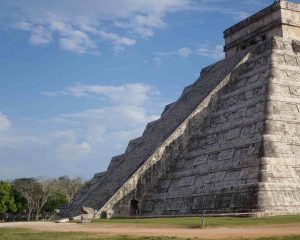
As you may know, the autumnal equinox – also known as the September and/or fall equinox – falls tomorrow, September 22nd. The fall equinox is the astronomical start of the fall season if you’re in the Northern Hemisphere, and the beginning of the spring season if you’re in the Southern Hemisphere. The 2020 fall equinox arrives here in the Northern Hemisphere on Tuesday at 9:31 A.M. EDT – did you know the actual time changes each year? This is the latest start to the fall equinox since 2015!
 Linguistically speaking, the word “equinox” comes from Latin aequus – which means “equal” – and nox – which means “night.” Equal night, equal day: on the equinox, day and night are roughly equal in length. Throughout history, cultures have marked the autumnal equinox. In England, the Druids observed this important change of seasons with feasts, harvests, and celebrations. For the Druids, the fall equinox indicates that:
Linguistically speaking, the word “equinox” comes from Latin aequus – which means “equal” – and nox – which means “night.” Equal night, equal day: on the equinox, day and night are roughly equal in length. Throughout history, cultures have marked the autumnal equinox. In England, the Druids observed this important change of seasons with feasts, harvests, and celebrations. For the Druids, the fall equinox indicates that:
“The Wheel of the Year turns and the time of balance returns…marks the balance of day and night before the darkness overtakes the light…the time of the second harvest…[the] central theme – thanking the Earth, in her full abundance as Mother and Giver, for the great harvest, as Autumn begins.” (source of information with quotations)
 Some cultures even built monuments to celebrate and honor the autumnal equinox. Most well-known is the work of the Maya, who constructed the El Castillo step pyramid at Chichen Itza in Mexico. Anthony Aveni, Colgate University professor and author of The Book of The Year: A Brief History of Our Seasonal Holidays, reports that there is a legend from Mayan culture that tells the story of an ancient feathered serpent god that descends from the sky on the equinox. So the pyramid was designed so that a snake made of light would appear to slither down the steps only during the autumnal AND vernal equinoxes. This effect not only creates a slithering snake but also connects a sculpted snake’s head at the bottom to the snake’s tail at the top of the pyramid. To this day, there are crowds of people at the El Castillo who hope to catch the light-snake slithering down the steps. (source)
Some cultures even built monuments to celebrate and honor the autumnal equinox. Most well-known is the work of the Maya, who constructed the El Castillo step pyramid at Chichen Itza in Mexico. Anthony Aveni, Colgate University professor and author of The Book of The Year: A Brief History of Our Seasonal Holidays, reports that there is a legend from Mayan culture that tells the story of an ancient feathered serpent god that descends from the sky on the equinox. So the pyramid was designed so that a snake made of light would appear to slither down the steps only during the autumnal AND vernal equinoxes. This effect not only creates a slithering snake but also connects a sculpted snake’s head at the bottom to the snake’s tail at the top of the pyramid. To this day, there are crowds of people at the El Castillo who hope to catch the light-snake slithering down the steps. (source)